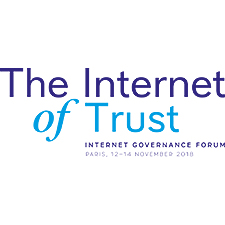How to enable local production and local contents
12 Nov 2018 10:15h - 11:15h
Event report
[Read more session reports and live updates from the 13th Internet Governance Forum]
The session explored different approaches of enabling local production and contents through experiences of international law, technical regulatory assistance of member states, and policy incentives. The goal of the session was to identify and share cases in which local contents are being promoted and supported. Additionally, the speakers showed that there is a real demand for locally produced content from the respective audiences.
The moderator, Mr Giacomo Mazzone, Head of Institutional Relation and Members Relations South at EBU, mentioned the difficulties of finding local broadcasting vehicles for the circulation of local content. While traditionally the EBU has had access to its own network and to the citizens, the Internet has brought a shift in consumer consumption habits. As these new tools and platforms become popular broadcasters have to face new types of gatekeepers. Therefore, how can successful practices of broadcasters be transposed to the present?
Ms Danielle Cliche, Secretary to the UNESCO Convention on the Protection and Promotion of the Diversity of Cultural Expressions, spoke about the importance of the adoption the Convention on the Protection and Promotion of the Diversity of Cultural Expressions in 2007. The convention gave governments the right to support local productions that had been under threat due to competition laws and similar types of regulations. Almost a decade later, there are many positive examples in which national content quotas of public and private media have enhanced the production and distribution of local content. The Internet brings new platforms with it and markets are booming especially due to streaming of video-on-demand services. The same protection rules for cultural expressions should be applied online.
UNESCO supports investments in local supply chains. Cliche spoke about the success of Colombian local cinema production which rose from 4 movies in 2003 to over 40 movies in 2013.
Mr Paolo Lanteri, World Intellectual Property Organisation (WIPO), said that ’we need to remind ourselves that content is the main driver making people go to the internet on a daily basis.’ He defined local in terms of language, relevance for the audience and local production. He explained WIPO’s role in creating a level playing field from a norm-setting perspective. Their aim is to establish an international legal framework that provides economic incentives to attract investments and to attribute recognition to content creators. Another element of WIPO’s role is access to knowledge. There is a wrong understanding that copyright hinders access to content creation. However there are many examples of viable business models where content can be accessed for free or on very competitive terms, so accessible not only to big corporations.
WIPO also gets many requests for technical assistance for the elaboration of norms. Lanteri concluded with the observation that there is a demand for and growing awareness of local content, that the issue is very complex, and that the copyright system might not be a panacea but that it is certainly part of the solution.
Mr Gonzalo Laguado Serpa, Proimagenes Colombia, explained the organisation’s role in creating policies on local productions for the last twenty years. Many of these proposals relied on the use of incentives for content creation, rebates for local content production and tax incentives for broadcasters. In addition to the increase of movies, he mentioned that the number of screens and theatres has tripled in the last decade.
This development was largely due to the elimination of taxes that affected but did not directly have to do with the film industry. These types of policies allowed the sale of cheaper tickets, thereby attracting larger audiences.
Another more recent project supported by Proimagenes colombia is the creation of the New Media Fund which directly benefits the creation of digital content.
Mr Alain Modot, MCG, spoke about the African context in particular and mentioned initiatives aimed at offering viewers all over the continent African content created by African producers. He also said that the market for broadcasters in Africa is booming due to the very high demand for video-on-demand platforms. He estimated that there are currently around 150 platforms and highlighted that all these platforms need local content.
Given the comparatively few theatres in many African countries and countries where there are no theates at all, the challenge is to establish frameworks where local producers can find funds and establish new business models and connect them with broadcasters. For this reason, Modot’s group together with the EBU are trying to get broadcasters to pre-finance or buy content. The African Hub will be able to provide investors with opportunities in which they can reach consumers, to allow content creators to raise money from public and private funds, and to create basket funds where development institutions can invest money most beneficially. The African Hub project is not yet running but has a strong basis and many advertising companies are interested because it taps into a huge potential market. According to Modot, African public broadcasters are equally interested in the project because it will allow them to offer premium high-quality content to their audiences.
By Cedric Amon
Related topics
Related event

